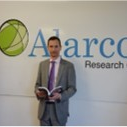Quantum Software Engineering and Programming
A special issue of Applied Sciences (ISSN 2076-3417). This special issue belongs to the section "Quantum Science and Technology".
Deadline for manuscript submissions: closed (31 May 2022) | Viewed by 15362
Special Issue Editor
Special Issue Information
Dear Colleagues,
Quantum computing is more and more becoming a mature field, having a great deal of direct applications in supply chain and logistics, chemistry, economics and financial services, energy and agriculture, medicine and health, etc. In the coming years, companies will progressively need to incorporate quantum software, and both the research and the practitioner communities must provide an answer to deal with this new challenge.
With the rise of the first quantum computers, several programming languages and quantum algorithms came up with promising results. Nevertheless, quantum software is not yet produced in a rigorous and industrial way. Software engineering and programming practices need to be brought into the domain of quantum computing.
Therefore, we hope that this Special Issue will provide an overall picture of the problems and challenges of developing quantum software and up-to-date software engineering processes, methods, techniques, practices, and principles for the development of quantum software to both researchers and practitioners.
Scope: Potential papers dealing with, but not limited to, the following topics are deemed suitable for publication:
- Quantum software development problems;
- Quantum programming challenges;
- Quantum software testing;
- Quantum programming development environments;
- Quantum software patterns and best practices;
- Quantum software quality;
- Quantum services delivery and management;
- Quantum software engineers’ education and training.
Prof. Dr. Mario Piattini
Guest Editor
Manuscript Submission Information
Manuscripts should be submitted online at www.mdpi.com by registering and logging in to this website. Once you are registered, click here to go to the submission form. Manuscripts can be submitted until the deadline. All submissions that pass pre-check are peer-reviewed. Accepted papers will be published continuously in the journal (as soon as accepted) and will be listed together on the special issue website. Research articles, review articles as well as short communications are invited. For planned papers, a title and short abstract (about 100 words) can be sent to the Editorial Office for announcement on this website.
Submitted manuscripts should not have been published previously, nor be under consideration for publication elsewhere (except conference proceedings papers). All manuscripts are thoroughly refereed through a single-blind peer-review process. A guide for authors and other relevant information for submission of manuscripts is available on the Instructions for Authors page. Applied Sciences is an international peer-reviewed open access semimonthly journal published by MDPI.
Please visit the Instructions for Authors page before submitting a manuscript. The Article Processing Charge (APC) for publication in this open access journal is 2400 CHF (Swiss Francs). Submitted papers should be well formatted and use good English. Authors may use MDPI's English editing service prior to publication or during author revisions.
Benefits of Publishing in a Special Issue
- Ease of navigation: Grouping papers by topic helps scholars navigate broad scope journals more efficiently.
- Greater discoverability: Special Issues support the reach and impact of scientific research. Articles in Special Issues are more discoverable and cited more frequently.
- Expansion of research network: Special Issues facilitate connections among authors, fostering scientific collaborations.
- External promotion: Articles in Special Issues are often promoted through the journal's social media, increasing their visibility.
- e-Book format: Special Issues with more than 10 articles can be published as dedicated e-books, ensuring wide and rapid dissemination.
Further information on MDPI's Special Issue polices can be found here.





